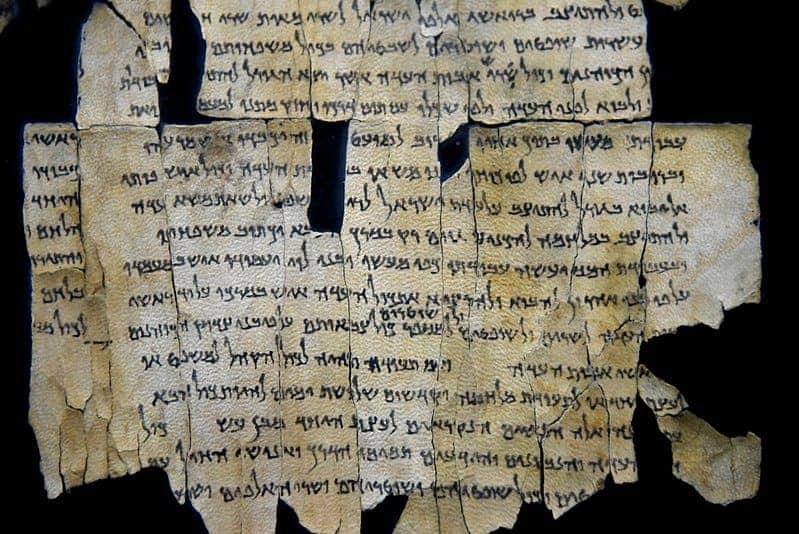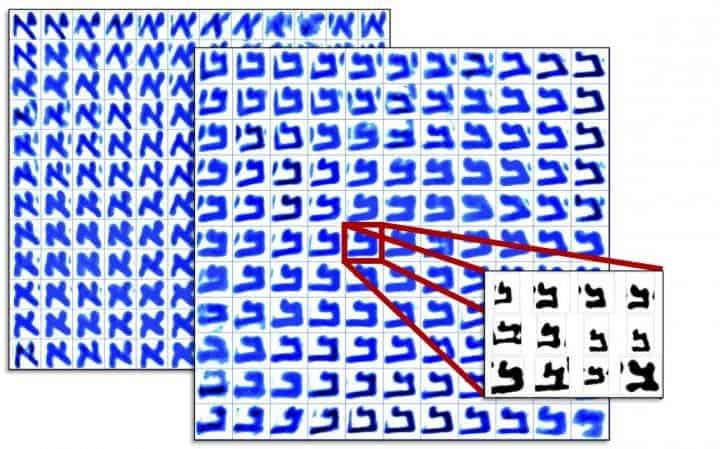
The Dead Sea Scrolls contain the oldest manuscripts of the Hebrew Bible, also known as the Old Testament, as well as previously unknown ancient Jewish texts. These invaluable documents, some of which date as early as the 4th century BCE, provide a unique vantage point of the Bible’s ancient scribal culture ‘in action’. But who was behind these monumental religious artifacts?
With the exception of a handful of named scribes in a few documentary texts, the vast majority of scribes are anonymous. This is particularly true for the more than a thousand scrolls retrieved at the caves near Qumran in the Judaean Desert, near the Dead Sea, which represent the largest trove of Dead Sea Scrolls.
Now, researchers at the University of Groningen used sophisticated neural networks and their expertise in the humanities to reveal new insights about these anonymous scribes. According to their new study published today in the journal PLOS ONE, although the handwriting may seem identical to the untrained eye, at least one of the Dead Sea Scrolls was written by multiple scribes who mirrored each other’s writing styles. Previously, some scholars suggested that some manuscripts should be attributed to a single scribe based on similar handwriting.
The team led by Mladen Popović, professor of Hebrew Bible and Ancient Judaism at the Faculty of Theology and Religious Studies at the University of Groningen, focused on the famous Great Isaiah Scroll from Qumran Cave 1. This is a lengthy text, which contains the letter aleph, or “a”, at least five thousand times.
“The human eye is amazing and presumably takes these levels into account too. This allows experts to “see” the hands of different authors, but that decision is often not reached by a transparent process,” Popović says. “Furthermore, it is virtually impossible for these experts to process the large amounts of data the scrolls provide.”
This is why Popović and colleagues turned to computer algorithms that are well suited to analyzing large datasets, including comparing subtle differences in the characters, such as their curvature (textural analysis).

The researchers, which included experts in artificial intelligence, developed an artificial neural network that can be trained using deep learning. This neural network was able to separate the 54 columns of text in the Great Isaiah Scroll into two distinct groups that were not distributed randomly through the text but were clustered.
Upon a closer look, which involved using various control methods to rule out noise in the data, the researchers concluded that the text was written by a second scribe who showed more variation in his writing than the first, “although their writing is very similar,” the researchers wrote.

This analysis is a perfect example of a modern interpretation of historical writing systems and manuscripts, a field of research known as paleography. In the future, the same method could be used to analyze other Qumran texts, revealing microlevel details about individual scribes and how they worked on their precious manuscripts.
The researchers will never be able to produce the identities of these scribes, but it’s amazing that seventy years after they were first discovered, the Dead Sea Scrolls are still revealing their secrets.
“This is very exciting because this opens a new window on the ancient world that can reveal much more intricate connections between the scribes that produced the scrolls. In this study, we found evidence for a very similar writing style shared by the two Great Isaiah Scroll scribes, which suggests a common training or origin. Our next step is to investigate other scrolls, where we may find different origins or training for the scribes,” Popović said.


